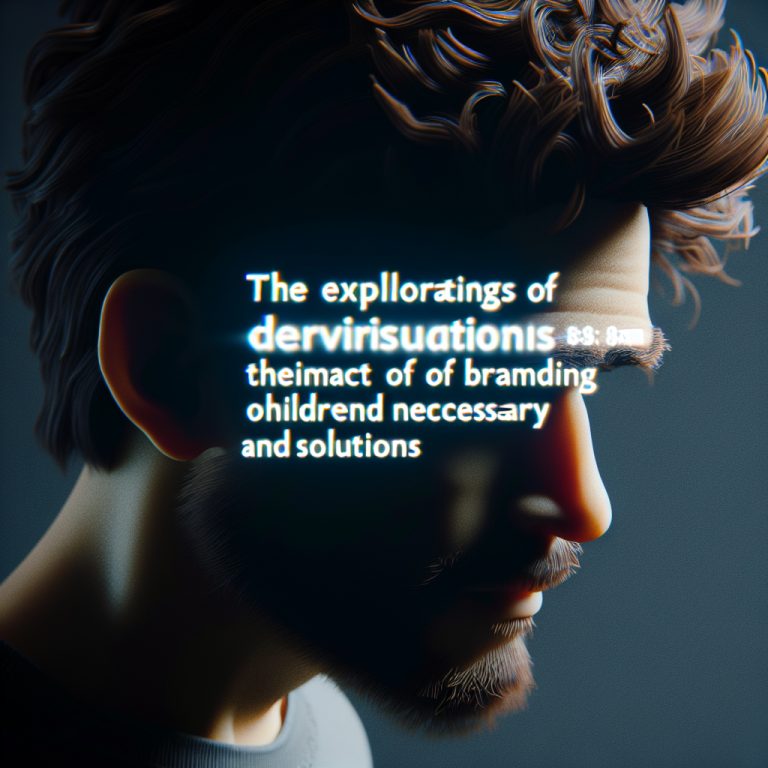Overview of Brands and Children’s Mental Health
What is a Brand for Children’s Mental Health?
A brand for children’s mental health includes products, services, and programs created with the goal of improving and maintaining the mental health of children. This often involves psychological intervention programs, counseling services, and emotional support products. Building a brand in this field is not just about the product but also about connecting with the community, fostering confidence, and supporting the healthy spirit of children.
Why Do Brands Impact Children? (Psychological Factors)
Psychological factors play a central role in how children perceive and interact with brands. Young children are often sensitive to brand messages and easily influenced by imagery, colors, and advertisements aimed at their emotional values. Brands that build a positive image will not only leave a good impression but will also contribute to building trust and a sense of security for children.
The Current State of Children’s Mental Health (Statistical Data)
According to various studies, the rate of children facing mental health issues has increased significantly in recent years. Statistics show that one in ten children faces mental health disorders, and this rate is believed to rise largely due to pressure from their living environment, family, and especially brand influence.
Research on the Degree of Brand Influence on Children’s Mental Health
Research Methods (Surveys, Interviews, Experiments…)
To assess the degree of brand influence on children’s mental health, research methods such as direct surveys with children, interviews with parents and psychologists, along with tests in real environments were employed. Through this, we obtained valuable data about the interaction between children and brands, as well as various influencing factors.
Research Results: Positive and Negative Impacts
Which Brands are Most Loved by Children? (Advantages)
The research results show that some brands leave a positive mark in children’s minds due to values like reliability, product quality, and attention to mental health. Famous brands like Disney and LEGO not only bring joy but also help children develop creative thinking and social skills.
Which Brands Put Pressure on Children? (Disadvantages)
While some brands promote positive development, others exert pressure on children through unrealistic messages about appearance and achievement. Our research discovered that brands frequently advertising idealized images can lead to feelings of inadequacy and low self-esteem in children.
Analysis of Influencing Factors on the Degree of Impact
Age, Gender, Living Environment…
The study also indicates that age and gender significantly influence the degree of brand impact. Children in elementary school are more easily influenced compared to adolescents. Furthermore, the living environment and family circumstances also play a crucial role in shaping their perceptions and feelings about brands.
Brand Value in Caring for Children’s Mental Health
Building a Trustworthy and Responsible Brand
Building Trust with Parents and Children
To establish a reputable brand in the field of children’s mental health, companies need to focus on building trustworthy relationships with both parents and children. This can be achieved through transparent information about products and services, as well as implementing mental health education programs for the community.
Commitment to Quality and Safety
The quality of products and services is a vital factor in building trust. Brands need to publicly disclose quality certifications and customer satisfaction surveys to demonstrate their commitment to children’s health.
Positive Brand Communication
Using Child-Appropriate Language
Using appropriate language and imagery not only helps convey the message better but also makes the brand more accessible to children. Communication campaigns should blend playful elements with educational aspects, creating an open space for children to interact and share.
Creating Inspiring Stories
Inspiring stories can help children form positive values and creativity. Brands should aim to develop interesting storytelling content that stimulates critical thinking and creativity in children.
Solutions to Mitigate Negative Brand Impact
Educating Children on Smart Consumption
An important solution is to educate children on smart consumption. Children need to be equipped with knowledge to analyze messages from brands and recognize positive and negative messages.
Collaboration between Family, School, and Brands
To improve the mental health situation of children, collaboration between family, school, and brands is essential. Families should create healthy play environments, and schools need to have appropriate psychological education programs.
The Role of Government Regulatory Agencies
The government and regulatory agencies also need to enforce stricter regulations regarding advertising, especially those targeted at children. These policies will minimize the negative impact of brands on children’s mental health.
Conclusion: Brands and Children’s Mental Health – The Need for Balance
From the research findings, it is clear that children’s mental health is significantly influenced by brands. Therefore, a balance is needed between positively connecting brands with children and ensuring that brand messages do not exert pressure or lead to negative emotions. Stakeholders, including businesses, families, schools, and the government, need to work closely together to develop brand models that are beneficial for children’s mental health.
Contact us today for tailored consultation!
Intage Vietnam: Your trusted partner for comprehensive and effective market research solutions.
📞 (+8428) 3820 5558
🌐 https://intage.com.vn/
🏢 45 Vo Thi Sau, Da Kao Ward, District 1, Ho Chi Minh City, Vietnam





